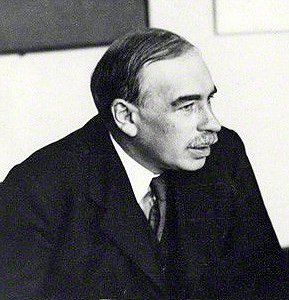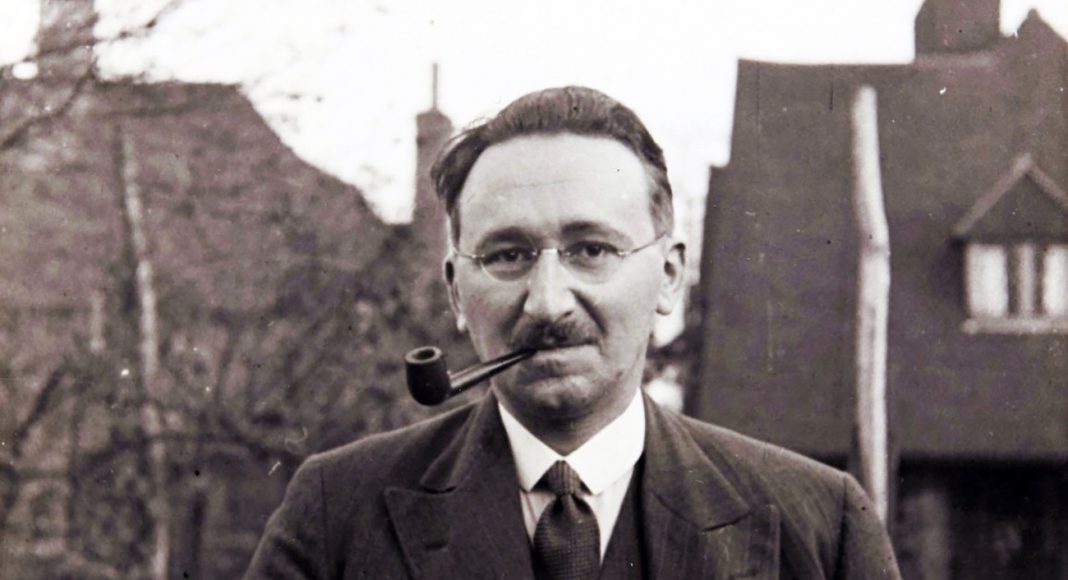In an excerpt from his book Samuelson Friedman: The Battle Over the Free Market, Nicholas Wapshott explores the disagreements between Friedman and Hayek over whether governments should manage the economy.
Editor’s note: The current debate in economics seems to lack a historical perspective. To try to address this deficiency, we decided to launch a Sunday column on ProMarket focusing on the historical dimension of economic ideas. You can read all of the pieces in the series here.
The middle Sixties were busy years for Milton Friedman as he juggled work on several projects heading toward a single aim: to establish his reputation as a major thinker in economics by refuting key parts of the Keynes inheritance. If he did not openly state his ambition, everything he did was aimed to achieve making an indelible mark on Keynes’s theoretical legacy. It was only in unpicking Keynes that Friedman sought to find new ground.
Friedman’s brief sojourn in Cambridge, England, where he met and debated with members of Keynes’s Cambridge Circus, and his association with Keynes’s nemesis, Friedrich Hayek, gave him ammunition to help him question the Keynesian hegemony. And while he would not be alone in his efforts to point out flaws in Keynes’s thinking, he made disproving Keynes his top priority.
Friedman was well equipped for the task. He had a sharp intelligence, an argumentative frame of mind, a stubbornness which kept him focused on the job at hand, a skin thick enough to withstand the brickbats thrown at him from the leaders of his discipline, and a knack for generating publicity. And to defeat Keynesianism, Friedman had a big idea: inflation was caused solely by the velocity of money. Paul Samuelson reminded George Garvy, an archcritic of Friedman’s monetarism and an authority on the velocity of money, that Thomas S. Kuhn had written in The Structure of Scientific Revolutions his account of how paradigm shifts take place, that “it takes a theory to kill a theory.”
One of Friedman’s primary launching pads was an early work by Keynes, albeit a book that by the time of publication its author had discarded. Each summer in Cambridge, England, in the years immediately after World War I, Keynes gave lectures, which—he was the consummate self-marketing businessman—were published in book form the following fall. The summer of 1923 saw Keynes give talks that when collected became A Tract on Monetary Reform, in which the world’s most famous economist critiqued the quantity theory of money, the notion that the amount of money in circulation and the speed at which it changed hands (the velocity of money) were directly linked to the price of goods and services. It was for Keynes only one more abandoned way station on the road to The General Theory. Nonetheless, Keynes biographer Robert Skidelsky identifies A Tract as “the start of macroeconomics,” the study of an economy as a whole—including inflation, growth, interest rates, and employment, and their relationships to each other—rather than microeconomics, the study of individual economic acts in isolation.

A Tract became an inspiration for counter-Keynesian revolutionaries like Friedman. “I am one of a small minority of professional economists who regard [A Tract], not the General Theory, as [Keynes’s] best book on economics,” wrote Friedman in 1989. “Even after sixty-five years, it is not only well worth reading but continues to have a major influence on economic policy.” Friedman’s often-quoted one-liner that “Inflation is taxation without legislation” derives from the Tract chapter heading, “Inflation as a Method of Taxation.”
Keynes asserted in A Tract that the general price level was directly linked to the amount and velocity of money in the system, which in turn reflected the extent of economic activity. If the money supply could be controlled—by banks rationing the supply of credit, say—inflation and growth could both be managed. Keynes makes a strong case in A Tract for the need to manage economies to iron out the vicissitudes of the business cycle, with its ebb and flow of money and concomitant rise and fall in prices.
The notion that an economy could and should be managed was—and to some conservative economists remains—a controversial notion. Managing an economy elevated the importance and power of public officials and economists, pitting their competence and judgment against the invisible hands of market forces. Friedman agreed with Keynes that an economy could be managed by government, and it was his belief that prices not only could but should be managed—by the central bank controlling the amount of new money entering the system—that caused many free marketeers, including Hayek, to sputter.
Austrian economists like Hayek believed such an approach would fail, as no one could know enough about the workings of the economy to manage it with any accuracy. In Hayek’s view, the market was best left to right itself. He always complained that Friedman was closer to Keynes than Hayek was to either of them. “In one respect, Milton Friedman is still a Keynesian, not on monetary theory but on methodology,” Hayek explained. By accepting the premises of macroeconomics—a branch of economics that Keynes had invented, “very much against his own intentions,” according to Hayek—Friedman had made a serious intellectual error. He continued:
“Milton Friedman is one of the apostles of macroeconomics. His theory is based on the supposed regularities between statistical magnitudes. He’s convinced and believes he has historically demonstrated that there is a simple relationship between the total quantity of money and the price level. . . . No one knows what the total quantity of money is, money has so many different meanings. . . . Aggregates, sums, averages, and statistics are no substitute for the detailed knowledge of every single price and their relations to each other that guide economic activity. It is a mistaken attempt to overcome our limited knowledge.”
It was not just that Friedman had signed up to Keynes’s macroeconomics rather than join the Austrian School, which relied solely on microeconomic activity, that caused Hayek offense. Friedman’s belief that the money supply should be controlled by the central bank to keep prices in check put him firmly on the Keynesian side of the argument over whether governments should manage the economy. Hayek would never forgive him.
Excerpted from Samuelson Friedman: The Battle Over the Free Market. Copyright (c) 2021 by Nicholas Wapshott. Used with permission of the publisher, W. W. Norton & Company, Inc. All rights reserved.
Learn more about our disclosure policy here.







